Who Is Álvaro Morata?
It was an eventful summer for Spaniard Álvaro Morata, who captained his country to Euros glory in Germany.
Whilst on the domestic stage, the forward clinched a move to Serie A side AC Milan — a move we speculated on in our previous magazine issue and analysed with a data visualisation.
The Rossoneri reportedly paid €13m for the 31-year-old, ensuring Morata’s total transfer fees over the course of his career have eclipsed the €200m mark.
However, despite demanding high transfer fees over the years from some of world football’s elite clubs, Morata has failed to score more than 15 league goals in a season.
Anyone would be forgiven for thinking that such unremarkable goal statistics would not warrant the money splashed out by prestigious clubs such as Real Madrid, Juventus, Chelsea, and Atlético Madrid.
So what is it about Morata that clubs are so willing to part with sizeable sums for his services?
This tactical analysis and scout report will aim to answer that very question.
We will delve into the forward’s statistics as well as look into the qualities he brings to teams.
We will also take a look at Paulo Fonseca tactics to explain how the Spaniard can expect to line up at the San Siro.
Álvaro Morata Weakness – Lacking A Clinical Touch
In any football side, strikers tend to be judged on their goals.
The graph below shows the total number of league goals scored by Morata since his first stint at Real Madrid in the 2012/13 season.

As we touched on before, Morata has never scored more than 15 league goals in a season.
The Spaniard only managed 11 goals in his first season at Chelsea, despite the Blues having forked out €66m as a replacement for Diego Costa.
Morata’s time at Stamford Bridge was plagued with being wasteful in front of goal.
The forward had a goal-per-shot ratio of just 0.14 in his first full season in West London.
But it’s not just a lack of efficiency in front of goal that has sometimes let Morata down, but seemingly his contribution to goal-mouth action.
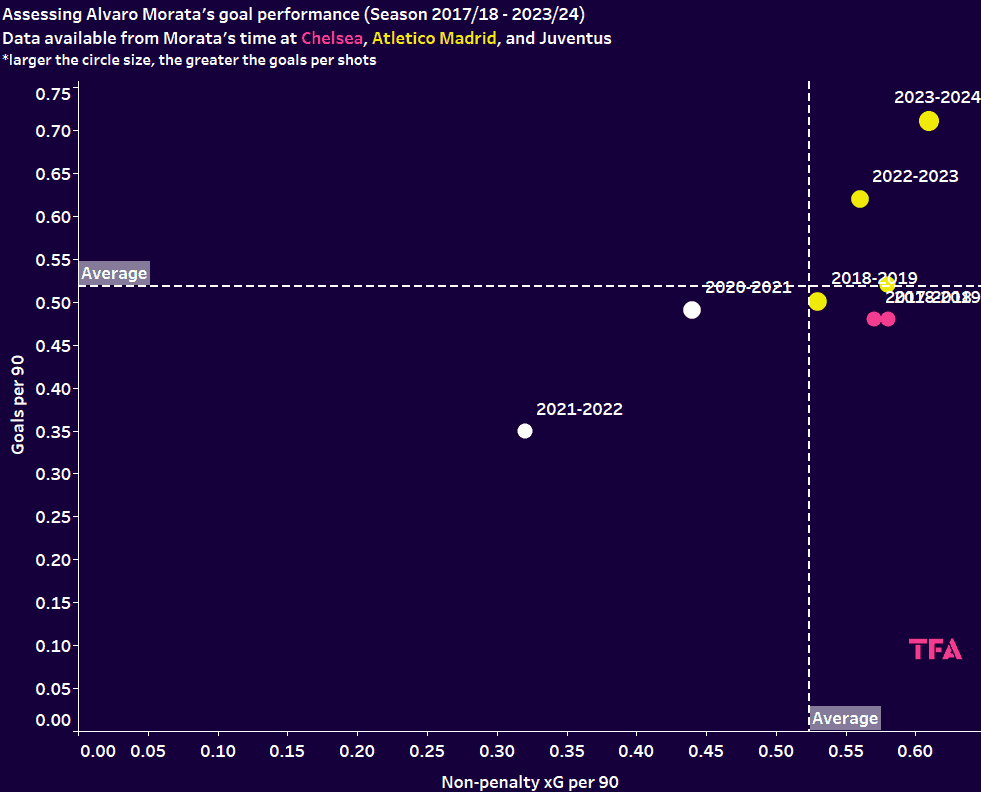
The scatter plot shows Morata’s non-penalty expected goals per 90 against his goals per 90 whilst at Chelsea, Atletico Madrid, and Juventus.
The graph shows that Morata has faired much better in La Liga than England and Italy’s top divisions.
In recent seasons, his goals per 90 have exceeded his expected tally.
However, the statistics do show that the Spaniard particularly struggled at Juventus, where his goals per 90 and non-penalty expected goals were below his average since 2017.
That being said, he was always a popular figure in Turin, as he was known as a player for the big occasions.
He had a knack for scoring when it mattered, such as his winner in the dying moments against Roma in the Coppa Italia final back in May 2016.
Whilst his lack of firepower could be forgiven in Italy, the same can’t be said of his time at Chelsea.
The Spaniard never really endeared himself to the Blues supporters.
The weight of expectation that came with his transfer fee probably didn’t help the then 24-year-old, as Morata is very much a confidence player.
When Morata could find the back of the net, it tended to come in cycles as once on a roll, he could score quite consistently but struggled if the goals started to dry up.
As much as confidence can play a big part in football, an influential reason for Morata not meeting expectations at Chelsea was the formation.
Morata struggled as a lone striker in the Premier League.
Although the forward has always been strong in the air—testified by his rank in the 98.9th percentile for the percentage of aerial duels won last campaign—the Spaniard did not have the physical presence to solely lead the line.
He is much more effective when linking up with teammates due to his pace and technical ability when in possession.
Álvaro Morata Style Of Play – Master of Space
Morata’s low goal totals are in part due to his style of play; he isn’t what you would classify as a poacher.
The Spaniard is more prone to dropping deeper in order to influence attacks for his side.
He will often play with his back to goal, looking to link up with his teammates, whether that be his attacking counterparts, central midfielders, or the full-backs, looking to create overloads on the wing.
An example of such overloads is shown below, where Morata receives a pass from the right-back Dani Carvajal.
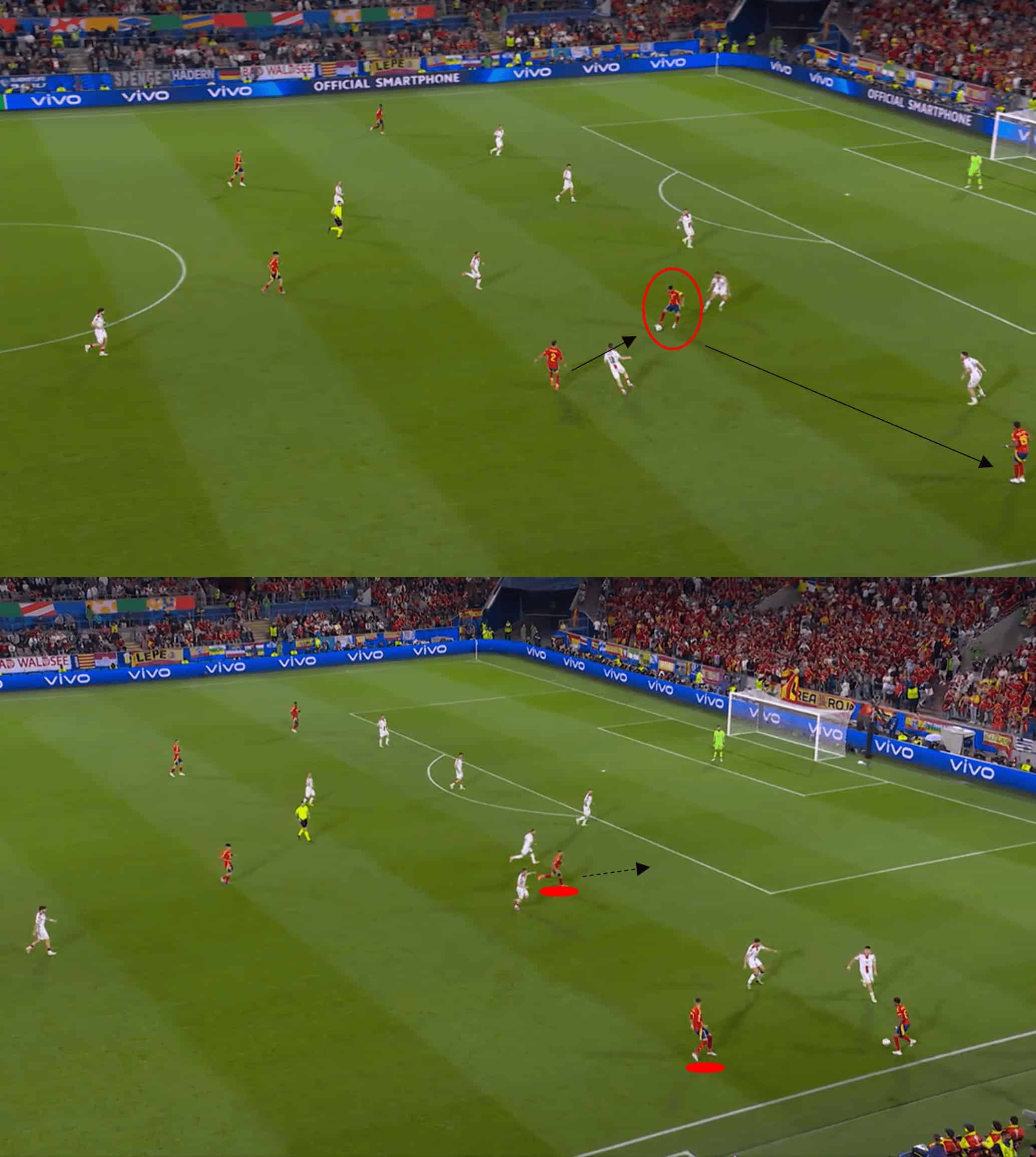
Morata is then able to link up with Lamine Yamal on the right side, facilitating Carvajal to invert inside to a more central position, giving Spain more options in the final third.
When the forward does get in wide areas, he is adept at crossing, particularly with dangerous in-swinging entries into the penalty area.
Whilst at Atlético last season, he was successful with 40% of crosses from the left flank and 57.1% from the right; he had a 100% crossing accuracy from both flanks during the Euros this summer.
The Spaniard thrives when he has willing runners around him, which goes to explain why he is more suited to 4-3-3 and 3-5-2 formations than his lone striker role at Chelsea.
It’s Morata’s quick thinking and strong technical ability that makes him such a great player to link up with as he looks to progress attacks at speed with one-touch passing combinations.
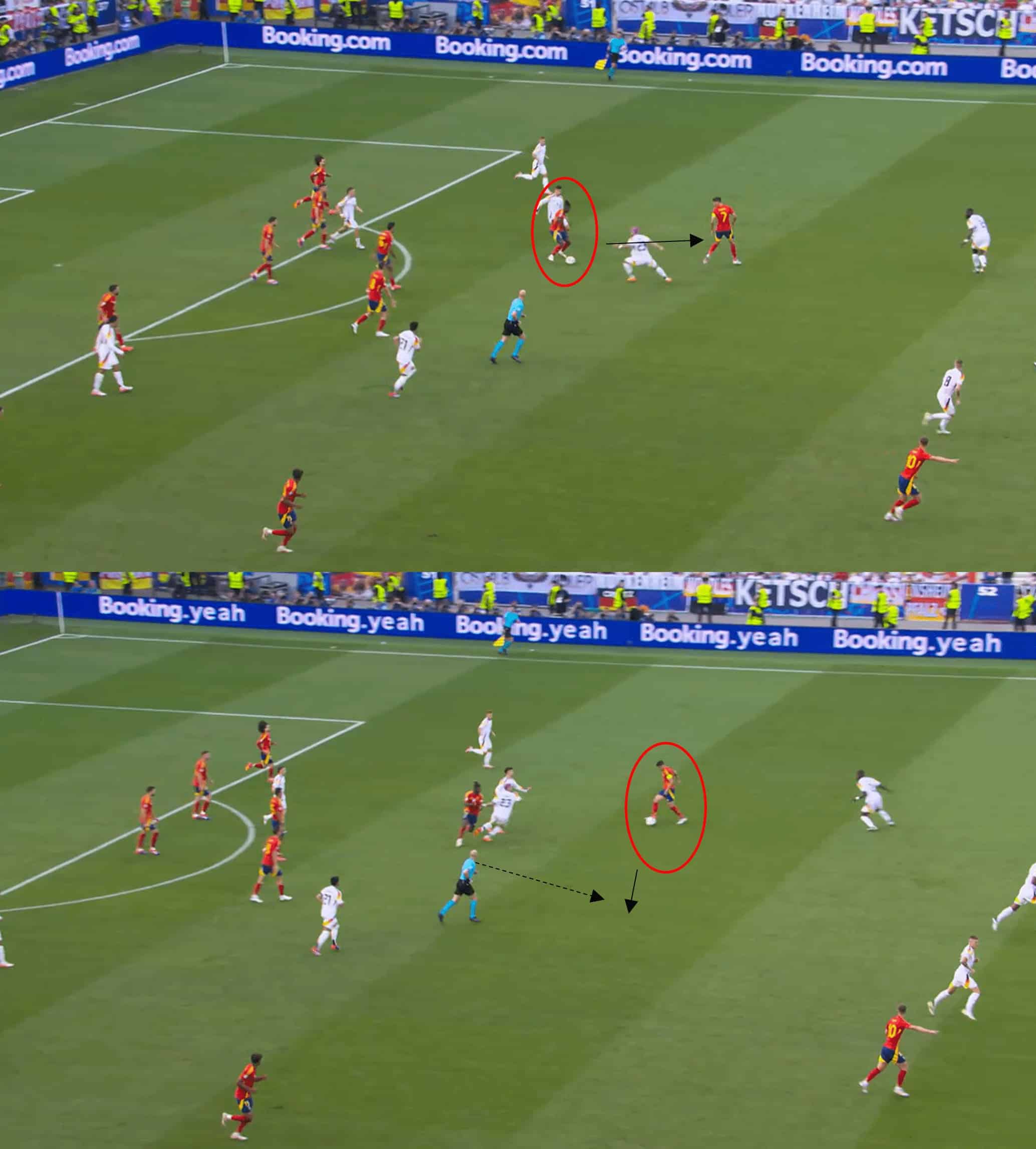
As Nico Williams is working possession out from Spain’s penalty area, Morata is able to make a first-time pass back to his teammate, who in turn then advances before playing a through pass towards Dani Olmo to put Spain on the ascendency.
The above example showcased how technically gifted the forward is, as he initially had his back to Williams when he received the pass.
As well as the first time passes, he is also physically strong, receiving possession on the turn to drive forward on the counter.
However, for all of Morata’s physical attributes, his intelligence on the football pitch sets him apart.
Álvaro Morata Pass Map
Firstly, this is evident in his passing choices.
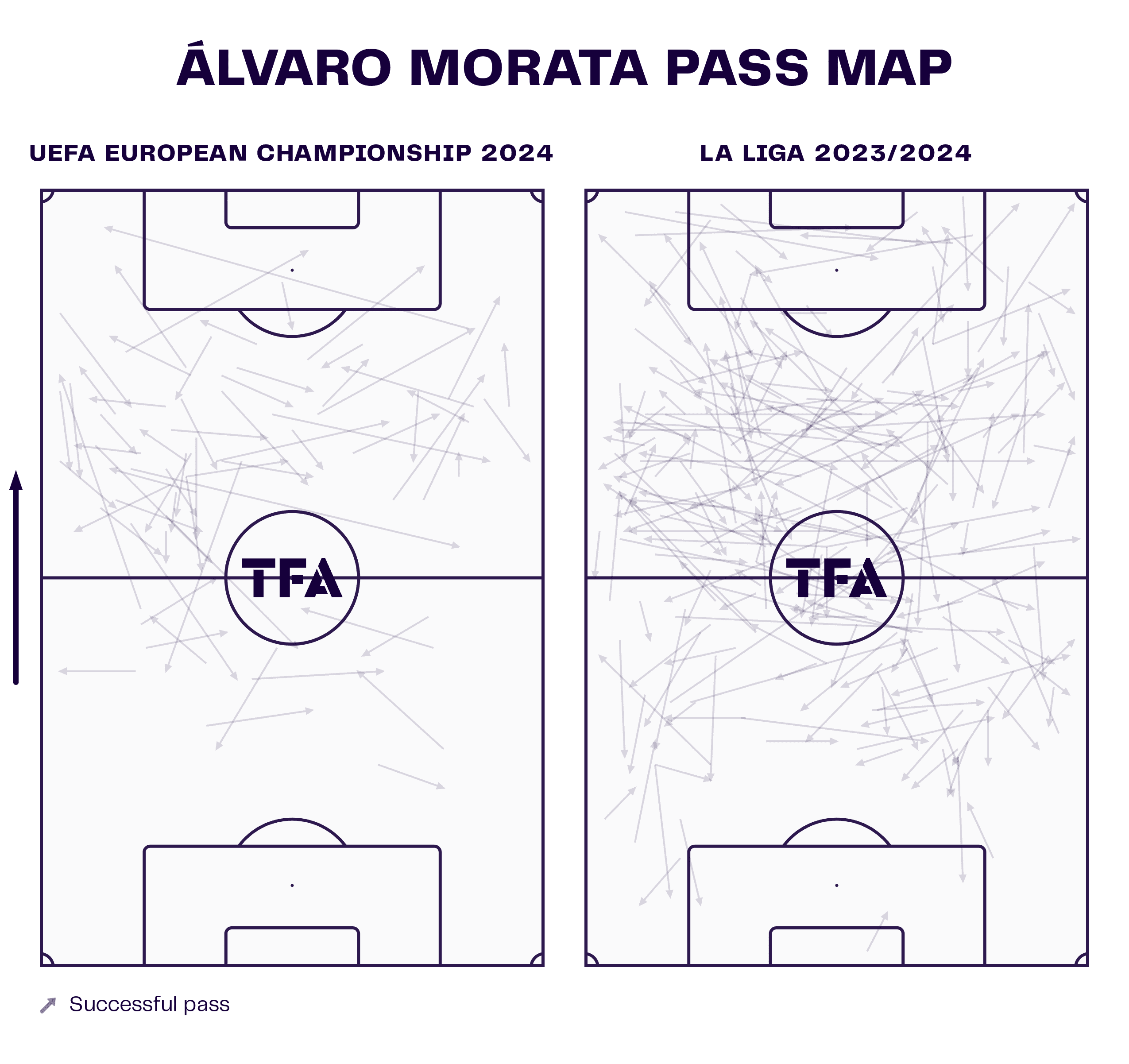
A look at the forward’s passing from the Euros and last campaign in La Liga shows Morata will often switch play to stretch the opposition.
Moreover, the majority of the Spaniard’s passes are angled to lay off for advancing teammates or spread play out to the wider areas.
Morata’s use of space and his ability to use this to his team’s advantage make him such an asset.
As Aymeric Laporte carries play out of Spain’s defensive line, Morata starts to make a run that Germany centre-back Antonio Rüdiger tracks.
However, Morata then halts his run to drop deeper to link up with Laporte.
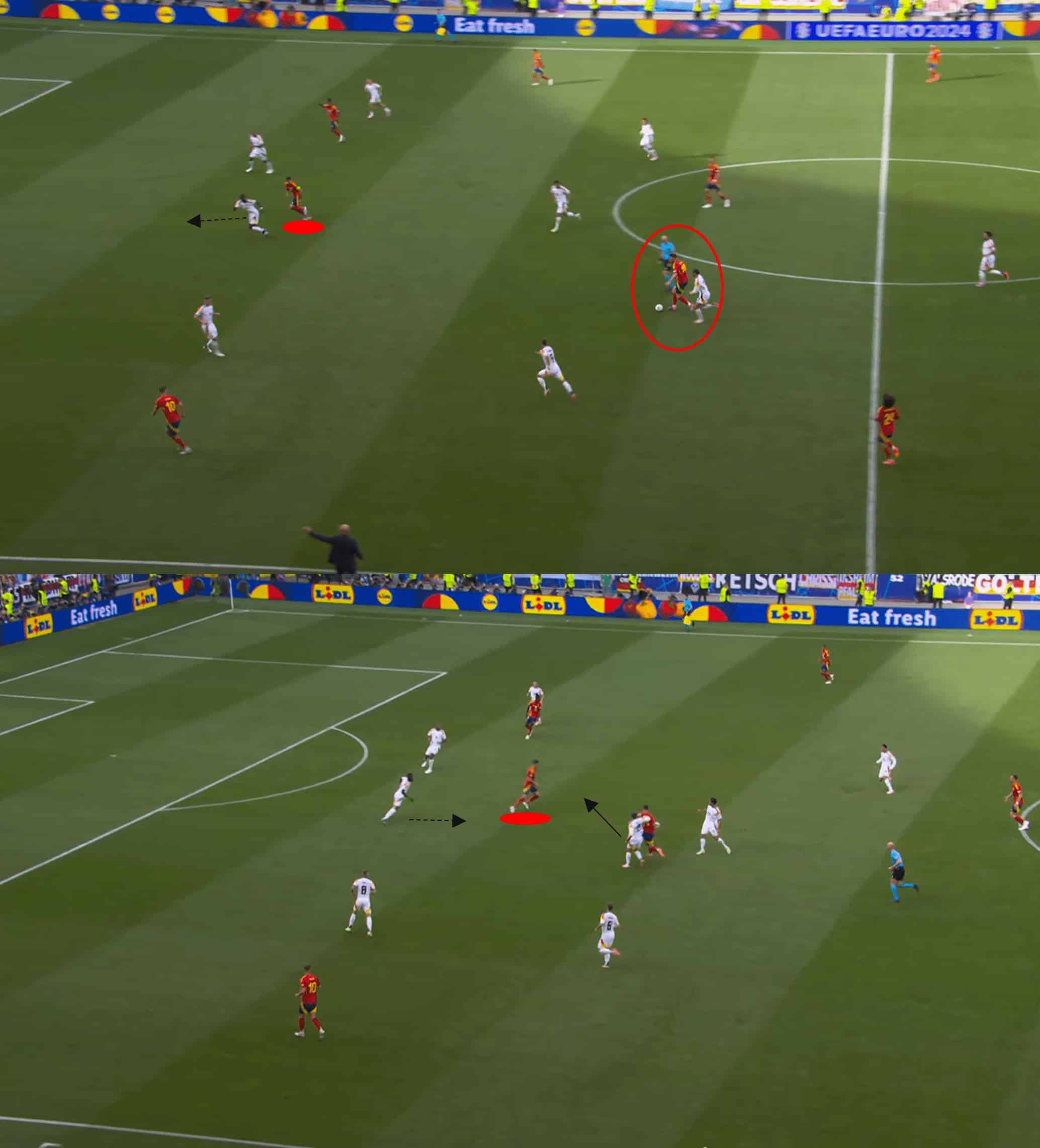
Upon noticing this, Rüdiger continues to track Morata, but as the next match still shows, this leaves a gaping hole in the German’s defensive line for Laporte to run into.
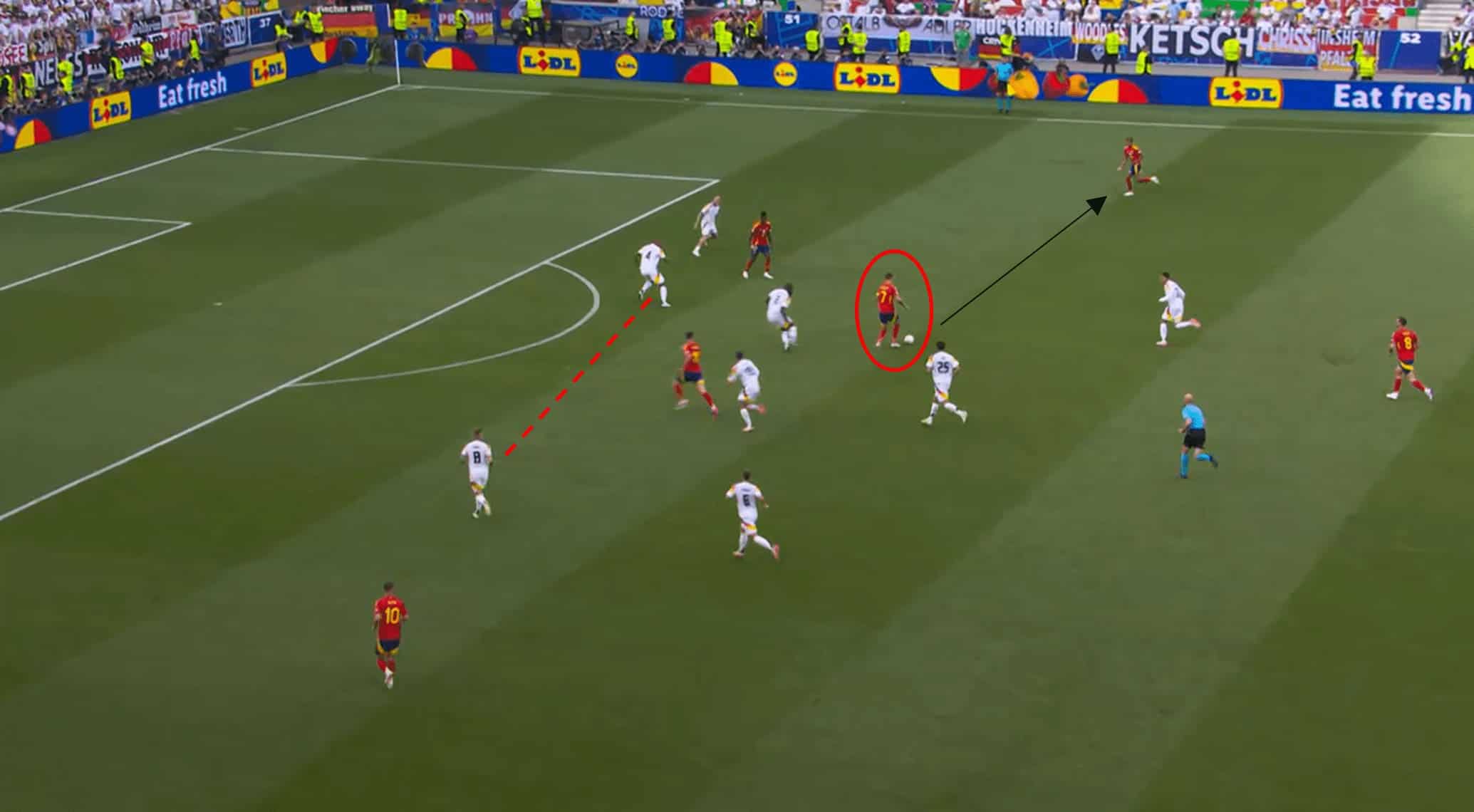
Morata then stretches out the opposition by spreading possession to Lamal on the right wing.
Using StatsBomb’s 360 data, we were able to create a bird’s-eye view of the previous match image.
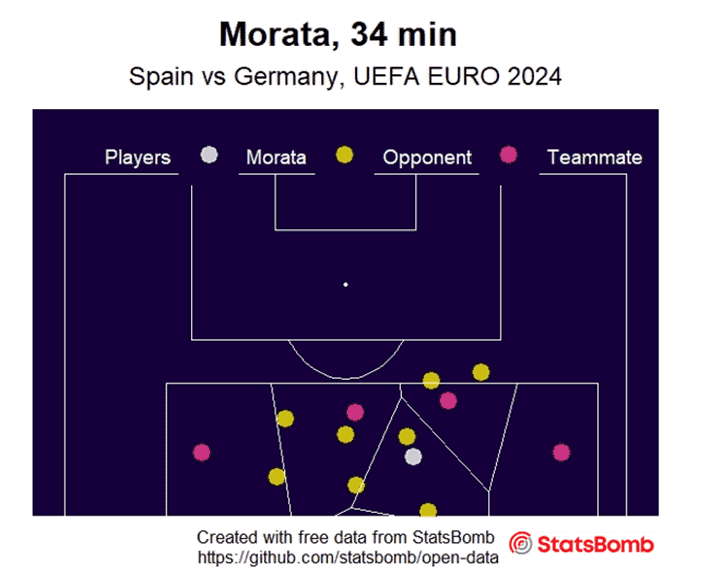
The above plot highlights Morata’s positioning alongside his teammates and opponents.
The plot has divided the pitch into sections according to the positions occupied by the Spain players.
In terms of Morata’s positioning, he is well in control of his space as most of his opponents are on the boundary lines, stuck in ‘no man’s land’ between the Spain players.
At the beginning of the attacking movement, when Morata had initially looked to receive a through ball, the German back four were drawn to a more central position.
However, as the forward identified the space to work possession into, his change of direction ensured that Lamal was free to receive a direct pass on the right, particularly given the German left-back’s more central location.
Spain were outnumbered in this attacking movement but were able to occupy more dangerous positions in the final third due to Morata’s movement.
Without the striker’s forward-thinking, Laporte wouldn’t have had the space to run into, and Lamal would likely not have received a pass in so much space.
Álvaro Morata Similiarites To Olivier Giroud
With Olivier Giroud’s transfer to the MLS confirmed, Morata looks to be the Frenchman’s replacement and will likely battle it out with Luka Jović to lead the line at the San Siro.
The following radar plot shows the similarities between Morata and Giroud.
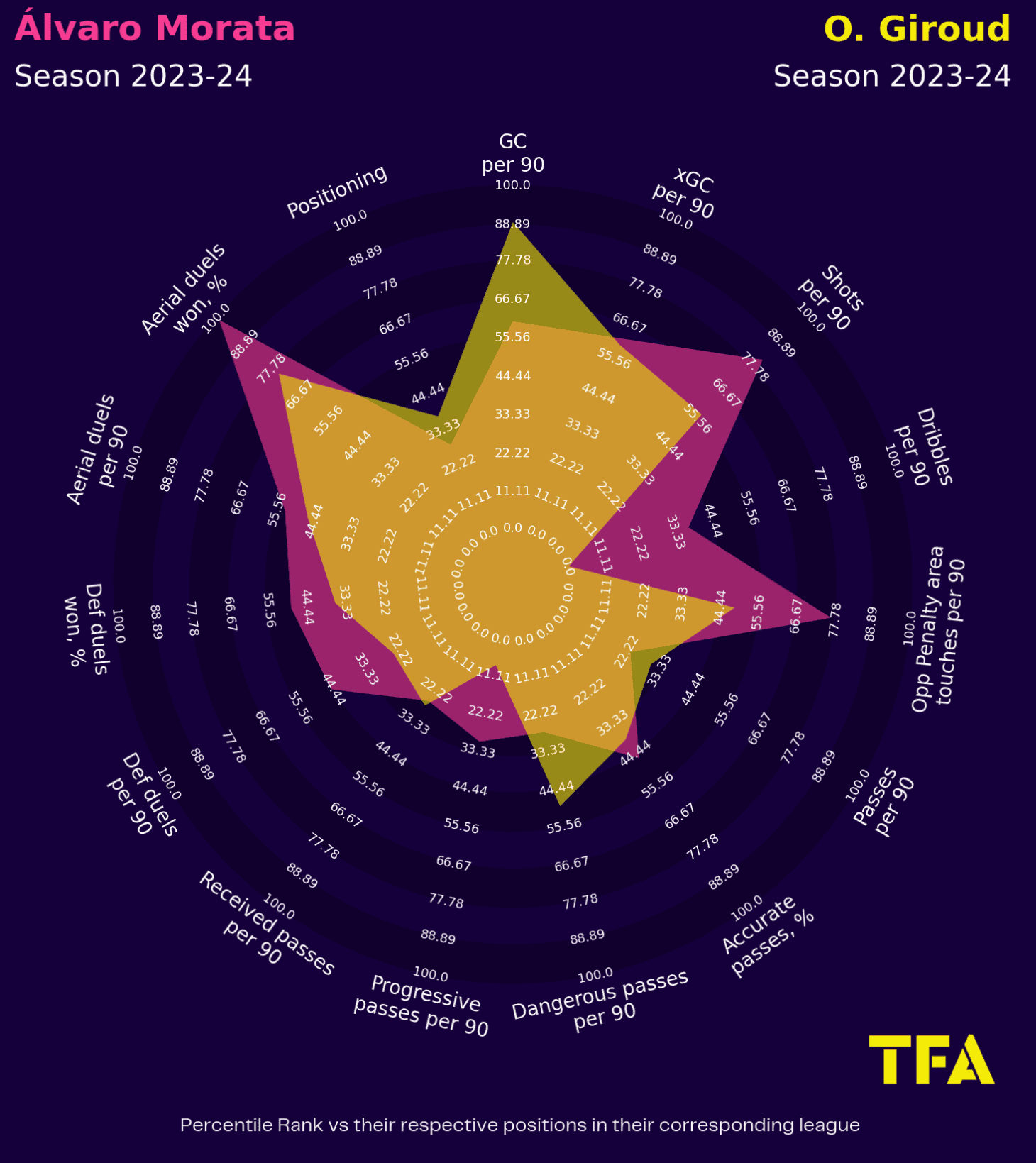
Whilst Giroud posed more of a goal threat per 90 than Morata last season, the Spaniard edged the former Arsenal man on the majority of the other attacking, possessional, and defensive metrics shown.
Like Morata, Giroud has also been an aerial threat.
His role at Milan was such that he would drop deeper to influence attacks, providing flick-ons and switching the play to the wider of the front three in Stefano Pioli’s preferred 4-3-3 shape.
However, for all the similarities between the two forwards, a new era is dawning in the red half of Milan as former Roma boss Paulo Fonseca was recently drafted into the managerial dugout.
Fonseca prefers to set up his sides in a 4-2-3-1 and looks to assert possessional dominance.
However, don’t be fooled into thinking that in playing one up top in Fonseca’s system, Morata might cut an isolated figure.
Although Fonseca’s side would line up with four at the back, when in possession, this would alter to three at the back, dropping a midfielder to play alongside the centre-backs and pushing both full-backs high up the pitch.
The wider midfielder would then drift inside to the half-spaces, and the number 10 would drop back to ensure there would always be a double pivot in the centre of midfield.
The tactics ensure that Fonseca’s side could attack with five up front in a 3-2-5 formation when on the offensive.
With so many options in the final third, it’s not hard to see that Morata won’t be short of passing options this season.
Fonseca’s philosophy is that he sees value in positioning—as long as a player occupies the necessary space in the final third to be a threat, it doesn’t really matter who the individual is.
It was such fluidity that was seen during Fonseca’s time at Lille.
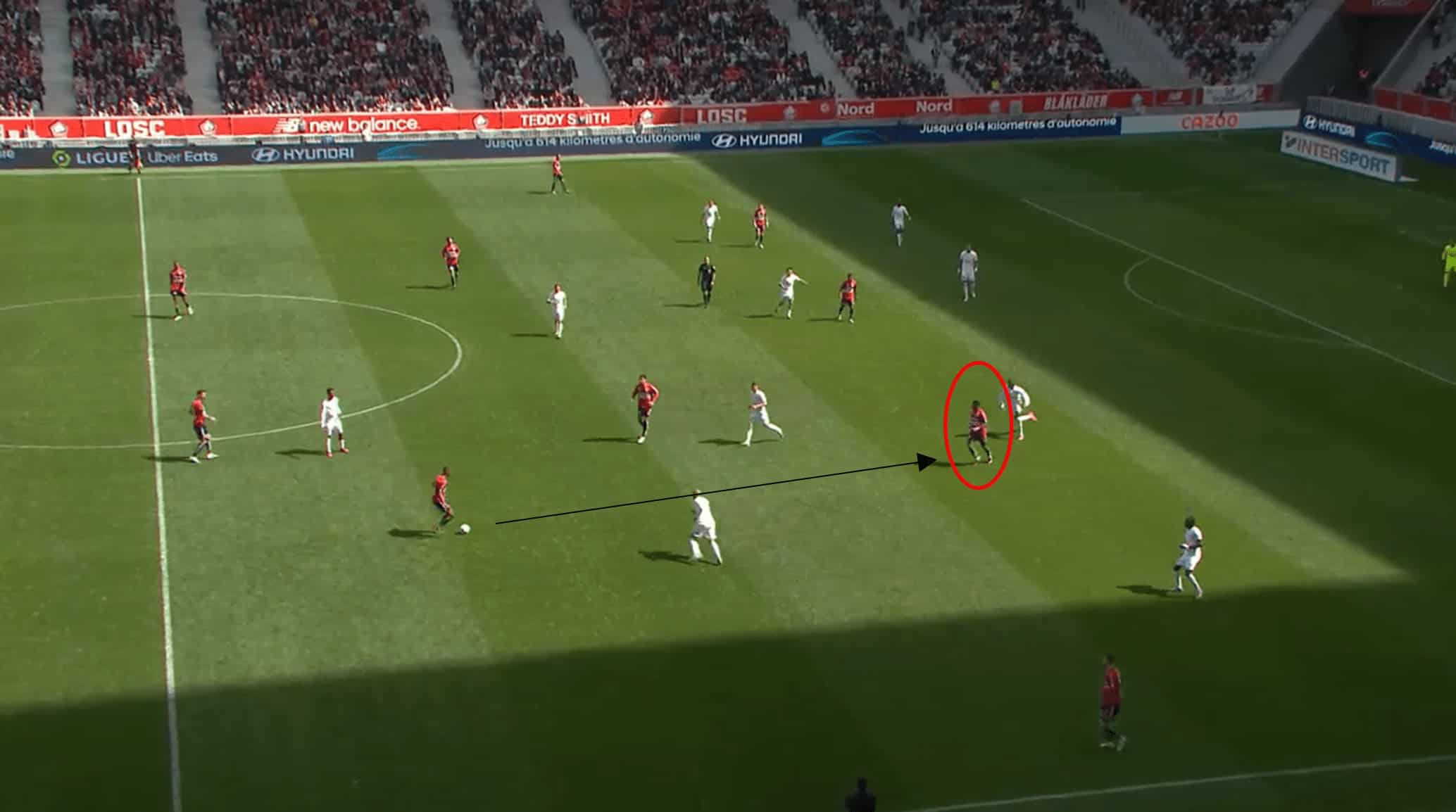
Jonathan David leads the line for Lille under Fonseca and is seen here dropping deep in the half-space to recycle possession out wide.
These types of movements are synonymous with Morata, as we’ve already observed.
Despite being the striker, David’s positioning is such that he isn’t confined to areas in and around the penalty area but is an important dialogue with the midfield – something we can expect from Morata.
It should be noted, though, that Fonseca isn’t predictable in his formation choice.
Upon his appointment at Roma, although he initially persisted with his preferred 4-2-3-1 shape, he soon shifted to 3-4-3 in response to the high press that Italian teams would adopt.
Fonseca found that by playing only four at the back in Serie A, his side was getting outnumbered in the defensive phase.
In playing a 3-4-3, out-of-possession, Roma dropped to five at the back, and the onus was on the wider of the centre-back pairing to initiate counters.
Upon retrieving possession, though, the 3-4-3 would mirror the 4-2-3-1 principles as Fonseca’s side looked to continue overloading in the attacking phases.
If Fonseca reverts to this formation choice at Milan, Morata’s quick passing combinations will be influential in any counters.
Moreover, without the ball, Morata fits in perfectly to Fonseca’s preferred philosophy of adopting a high press, with an emphasis on counterpresssing.
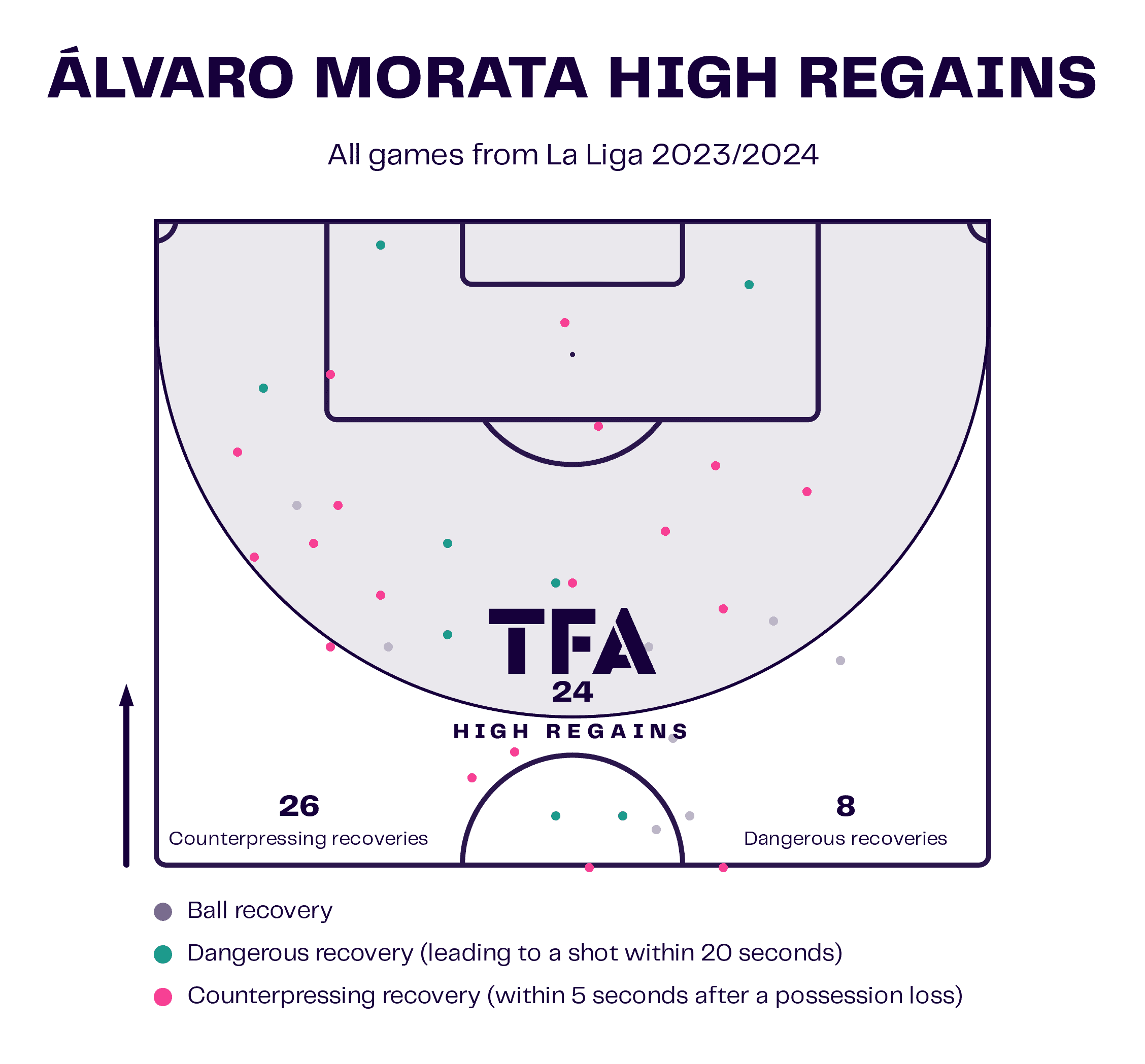
The graphic shows that in the last campaign, Morata would often engage in such counterpressing, particularly on the left channel, to confine the opposition in a tighter area of the pitch.
This aligns with Fonseca’s preferred approach as he would look to hem the opposition into the wider channels of the pitch, allowing less space for the opposition to break out.
Therefore, Morata’s ability to retrieve possession will be crucial for his side in preventing the opposition from launching counterattacks.
The signs point to the Spaniard being a key figure at the San Siro this season.
Conclusion
Over the seasons, Morata has been somewhat of a mystery to the average football fan.
He has consistently secured big money transfers without really having the goal statistics to back up such financials.
However, as this analysis has shown, Morata’s overall quality and intelligence in finding space in the final third to his side’s advantage makes him a real asset to his team.
When it comes to football, we can often be fixated on who has possession of the ball and what they do with it, but it is often the off-the-ball movements that are so important in dictating the future play.
The Spaniard’s style of play appears well-aligned with Fonseca’s principles.
This season could prove to be one of Morata’s best.

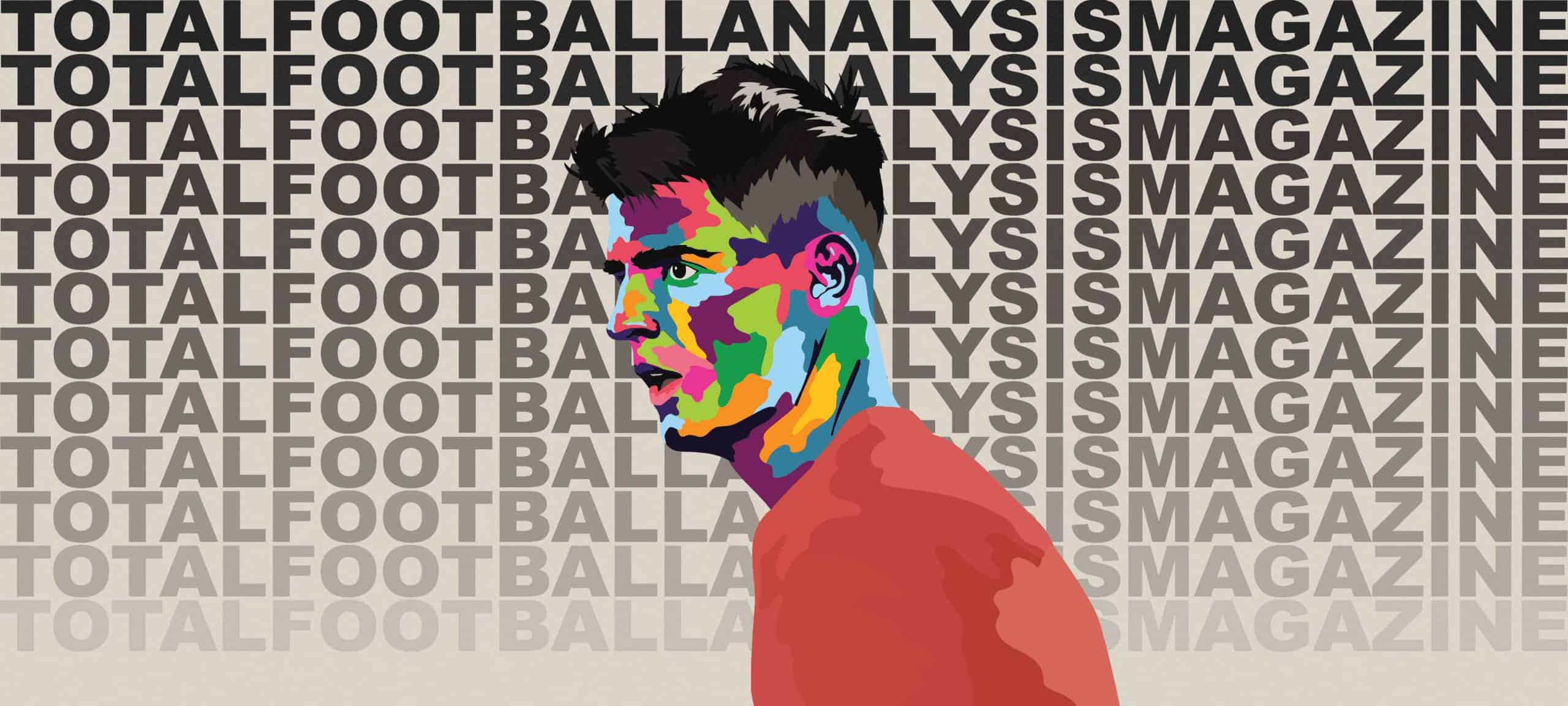




Comments